
Best Website for Herkimer Diamond Information
Last Updated:

About this Webpage:


Free Website Where Herkimer Diamond Enthusiasts Share Information with the Public
Scroll down
Dr.C. did two talks at the Herkimer Diamond Festival (July)which are in a Youtube movie. The research on the Herkimer District is in need of samples and photos.
How can you help? Visit the "how to help" page.

Dolomite: The most common mineral associated with Herkimer diamonds
Dolomite is the most common mineral associated with Herkimer diamonds. It is the first mineral to appear in crystal form. It is at every deposit, although not exactly the same in appearance. There is evidence to support at least two phases of dolomite, and early and then a late. There may have also been a third iron rich phase, but how this presents itself throughout the district is not yet know. In many places the dolomite is heavily weathered and thus distinguishing second phase from third is difficult. The three phases are described below.



Early dolomite - phase 1
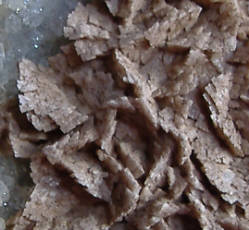

Second dolomite - phase 2

Late dolomite: Iron rich - phase 3




Space for Hickory Hill first phase "stacked" dolomite photo
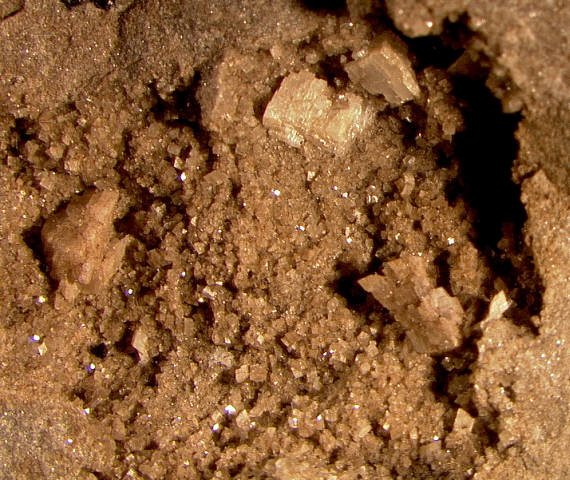
The photo on the left is a different specimen from the same location as above (DA) and about 2 cm across. You can see the well developed coating of nearly clear, small, first phase dolomite (arrow 1). But you can also see the larger crystals of the second phase dolomite (arrow 2), which are always opaque, and show some type of step-like growth pattern. The nature of this step pattern varies across the district. At Diamond Acres (DA) the second phase dolomite is tan and is also highly etched, as seen in the photo below.
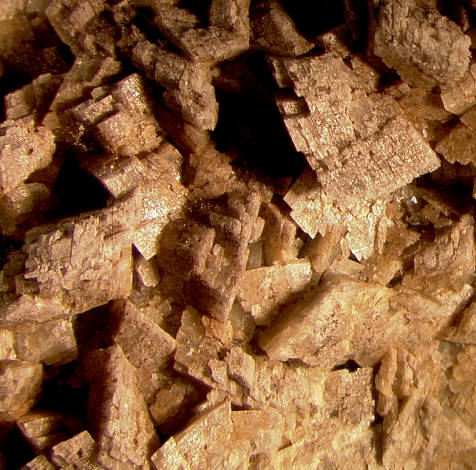
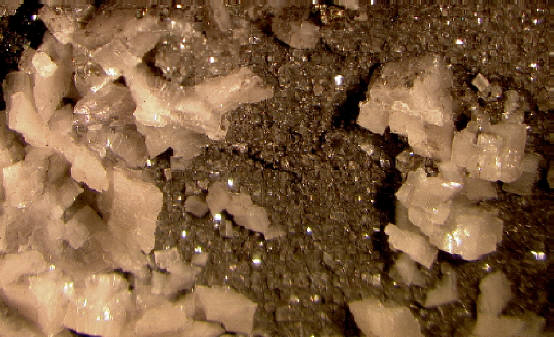
The best third phase dolomite from the district is from Palatine Bridge, NY. This specimen photo (2 cm across) bottom left, was donated by Brian Slater (NYSM) who did extensive research in a quarry there. The white crystals here are calcite and the dark peach crystals are dolomite with some showing excellent saddle textures. Thin section microscope work (personal communication Taury Smith, NYSM, 2009) shows that these darker dolomites have a lighter interior, and thus may represent an iron rich dolomite phase that happened after 2nd phase white saddle dolomite, or late in the formation of the second phase dolomite.
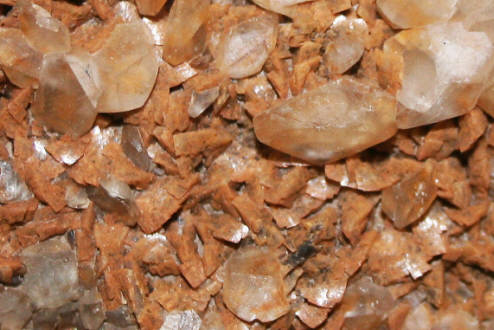
On the right is pocket dolomite, with a slight peach tint, from HDM (2008, 4 cm across). It is likely that the "peach" color common to most of the third phase dolomite found throughout the Herkimer Mining District is due to oxidation, or a rust forming from the original iron in the dolomite.
But below left, is perhaps what third phase dolomite might look like if it was not weathered to a peach-rust color. It might be black! Photo, Dr.C. (2008).
Space for Middleville saddle phase 2 dolomite photo
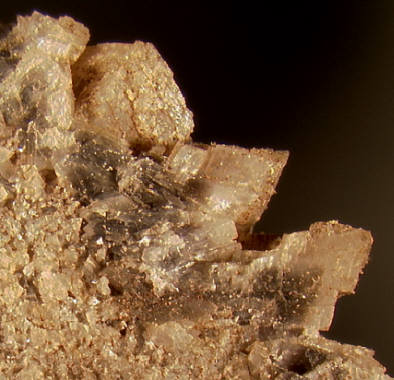
On the upper left is black dolomite. Thanks to Bob for donating this unique St. Johnsville specimen (2 cm across). Dolomite this dark is an unusual find for the Herkimer District, and chemically might be ankerite. The clear crystals are calcite. It is proposed here that at one time there was much more black dolomite present throughout the district. What has happened is that the surface of the dolomite has been altered to colors ranging from cream, to tan, peach and brown-red. Peach dolomite is quite common in Middleville, and it has been seen at DA and TCR.
Upper right is a photo that shows the inner black core of the second/third phase dolomite altered on the outside to a light color. Specimen is from TCR, photo Dr.C. - 3 cm across, 2009.
Space for CG dark dolomite photos and
discussion
W. David Hoisington, Ph.D.
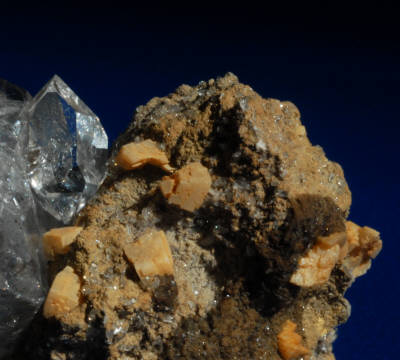
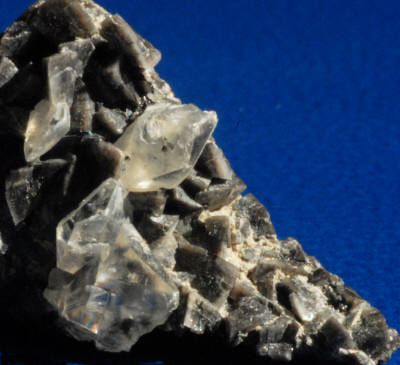
July, 2011